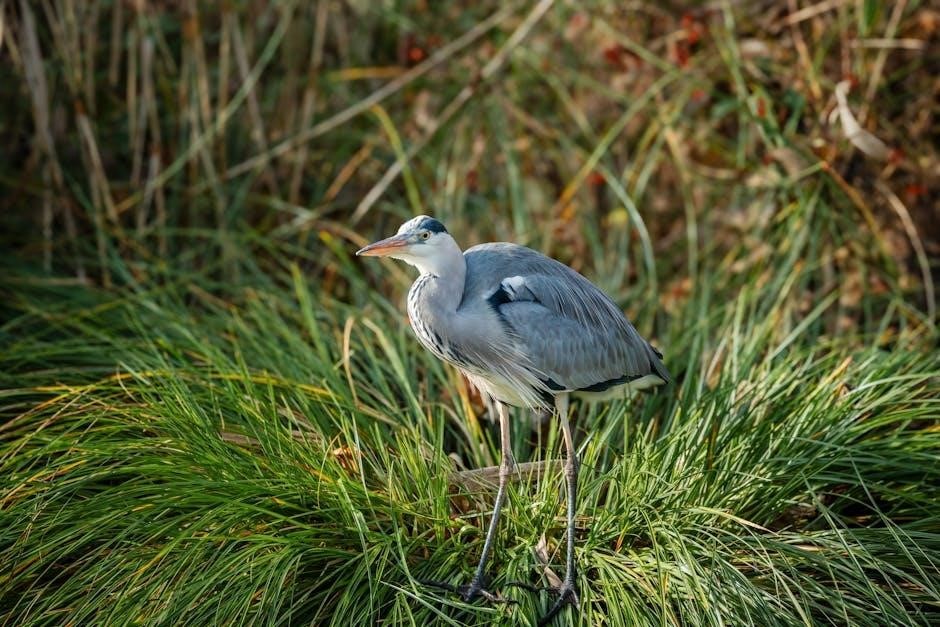fly fishing knots pdf
Fly fishing knots are essential for connecting lines, leaders, and flies․ Reliable knots ensure strength and performance, making them a cornerstone of successful fly fishing․ Discover the fundamentals and explore fly fishing knots PDF guides for easy learning and reference․
Why Fly Fishing Knots Are Essential
Fly fishing knots are critical for ensuring a secure connection between lines, leaders, and flies․ A well-tied knot prevents line failure, which can result in lost fish and gear․ Proper knot seating and testing are vital, as even minor imperfections can lead to breakage under tension․ Reliable knots boost confidence, allowing anglers to focus on technique and presentation․ Whether attaching a fly, connecting lines, or creating loops, each knot serves a specific purpose․ Even experienced fly fishers emphasize the importance of mastering these fundamental connections, as they directly impact the outcome of a fishing trip․ By understanding and practicing essential knots, anglers can minimize gear failure and maximize their time on the water․
Overview of Common Fly Fishing Knots
Common fly fishing knots include the Clinch Knot, Improved Clinch Knot, and Orvis Knot, each serving specific purposes․ The Clinch Knot is a basic connection for attaching flies, while the Improved version offers greater strength․ The Orvis Knot excels for topwater flies, providing versatility․ Loop knots, like the Surgeon’s Knot, allow for easy fly changes․ The Blood Knot is ideal for joining two lines of similar diameter, ensuring a smooth connection․ These knots form the backbone of fly fishing, covering attachments, line connections, and loop creation․ They are widely used due to their reliability and efficiency, making them indispensable for anglers․ Resources like fly fishing knots PDF guides provide step-by-step instructions, helping anglers master these essential techniques for improved fishing success․
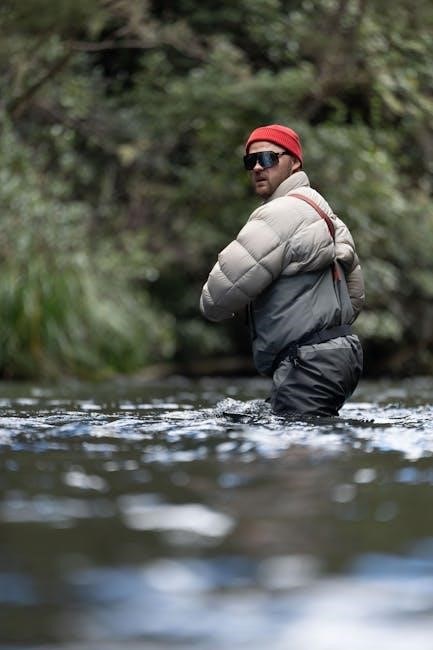
Top Fly Fishing Knots for Beginners
Beginners should master the Clinch Knot, Improved Clinch Knot, and Orvis Knot for fly attachment․ Loop knots like the Surgeon’s Knot are also essential․ Fly fishing knots PDF guides offer clear instructions․
The Clinch Knot: A Basic Fly Fishing Knot
The Clinch Knot is a fundamental fly fishing knot used to attach flies to the tippet or leader․ Its simplicity makes it a favorite among anglers, especially beginners․ To tie the Clinch Knot, thread the tippet through the fly’s eye, form a loop, and pass the tag end through the loop․ Wrap the tag end around the standing line 5-7 times, moisten the knot, and pull tight․ Proper seating is crucial for reliability․ Fly fishing knots PDF guides often highlight this knot as essential for securing flies effectively․ With practice, the Clinch Knot becomes second nature, ensuring a strong connection between fly and line․ It’s a must-know for any fly fisher looking to start their journey with confidence․
The Improved Clinch Knot: Strength and Reliability
The Improved Clinch Knot is an enhanced version of the standard Clinch Knot, offering superior strength and reliability․ This knot is ideal for securing larger flies and heavier lines, making it a popular choice among experienced anglers․ To tie it, pass the tippet through the fly’s eye, create a loop, and wrap the tag end around the standing line 5-7 times․ The key improvement is an additional tuck of the tag end under the final wrap before pulling tight․ This extra step significantly reduces the risk of the knot slipping․ Fly fishing knots PDF guides frequently feature this knot due to its effectiveness in various fishing conditions․ Its reliability ensures that anglers can focus on their cast, knowing their gear is secure․
The Orvis Knot: Versatility for Topwater Flies
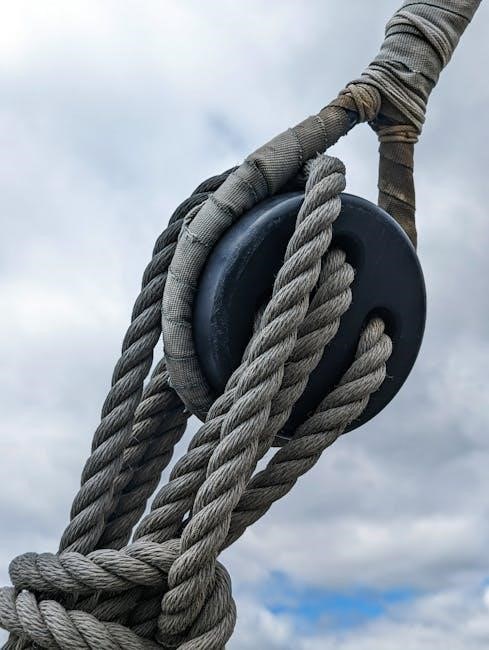
The Orvis Knot is a highly versatile and reliable choice for attaching topwater flies, particularly for patterns like crab and shrimp imitations․ Known for its quick tying process, this knot creates a strong and clean connection between the tippet and the fly․ It is especially effective for suspended flies, as it forms a secure loop that allows for natural movement․ The Orvis Knot is praised for its simplicity and durability, making it a favorite among anglers targeting surface-feeding fish․ Many fly fishing knots PDF guides highlight this knot due to its adaptability and ease of use․ Whether you’re fishing in fresh or saltwater, the Orvis Knot ensures a dependable connection, giving you confidence in your setup․ Its reliability makes it a must-learn for any fly fisher looking to expand their knot repertoire․
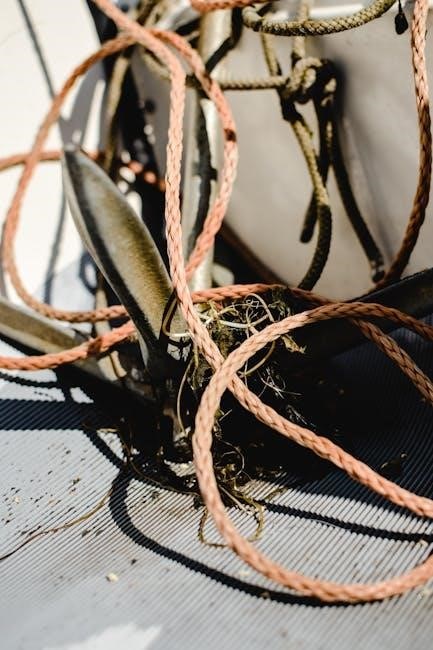
Advanced Fly Fishing Knots
Advanced knots like the Albright, Surgeon’s, and Blood Knot offer superior strength and reliability for complex fishing scenarios․ These knots are ideal for joining lines, creating loops, and ensuring efficiency in fly fishing setups․ Fly fishing knots PDF guides provide detailed instructions for mastering these essential techniques, enhancing your fishing experience with precision and confidence․
The Albright Knot: Joining Lines with Ease
The Albright Knot is a reliable and versatile knot used to join two fishing lines of different diameters․ It’s particularly useful when connecting a monofilament or fluorocarbon leader to a fly line․ The knot’s ease of tying and strong performance make it a favorite among both freshwater and saltwater anglers․ One of its key advantages is its ability to maintain a smooth line connection, reducing drag and minimizing the risk of line twist․ Fly fishing knots PDF guides often highlight the Albright Knot as an essential technique for any serious fly fisherman, providing clear step-by-step instructions and diagrams to ensure proper tying and reliability․ With consistent practice, anglers can master this knot quickly, enhancing their fishing efficiency and overall success on the water․
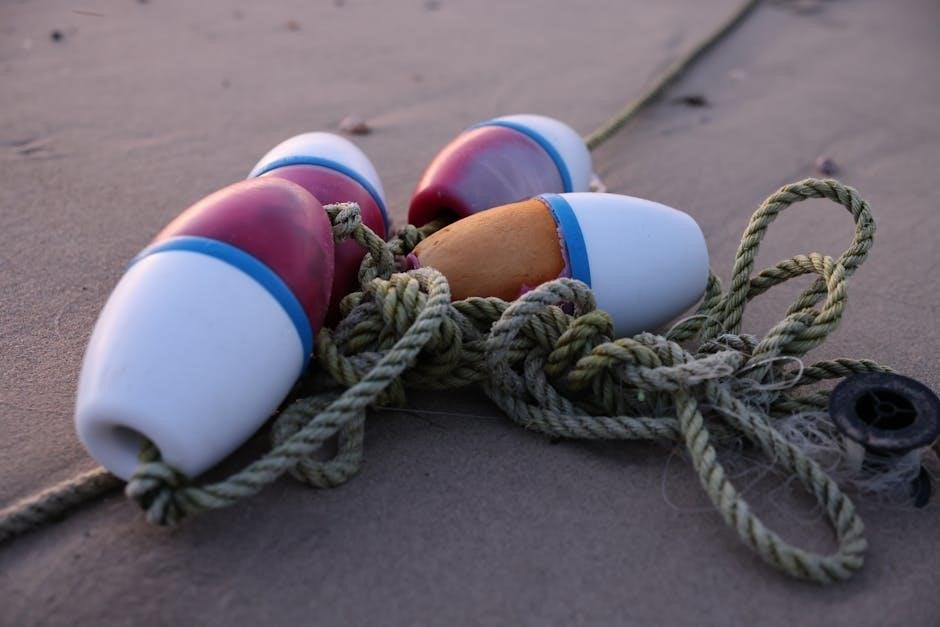
The Surgeon’s Knot: A Reliable Loop Option
The Surgeon’s Knot is a highly reliable and efficient knot used to create a loop in the end of a fishing line․ It’s a popular choice for fly fishing due to its simplicity and strength, making it ideal for connecting tippet to leader or creating a loop for attaching flies․ This knot is particularly useful when a quick, secure connection is needed, and its ability to maintain line strength ensures durability even under pressure․ Fly fishing knots PDF guides frequently feature the Surgeon’s Knot as a must-know technique, offering detailed illustrations and step-by-step instructions․ Anglers appreciate its ease of use and versatility, making it a go-to option for various fishing scenarios․ With consistent practice, mastering the Surgeon’s Knot becomes straightforward, enhancing both efficiency and confidence on the water․
The Blood Knot: Connecting Two Lines Efficiently
The Blood Knot, also known as the Barrel Knot, is a reliable and efficient method for connecting two fishing lines of similar diameter․ Its strength and simplicity make it a favorite among fly anglers for joining the leader to the tippet or two sections of monofilament line․ The Blood Knot’s durability ensures minimal line strength loss, even when under tension․ Step-by-step guides in fly fishing knots PDF resources provide clear instructions, making it easier for anglers to master this essential knot․ Its effectiveness in various fishing conditions and ease of tying have made it a staple in every fly fisher’s toolkit․ Whether you’re a beginner or an experienced angler, the Blood Knot is an indispensable skill for maintaining a strong and reliable connection between lines․
Knots for Specific Fly Fishing Scenarios
From loop knots for suspended flies to the Orvis knot for topwater patterns, specific scenarios demand tailored knots․ Explore fly fishing knots PDF guides for versatility and efficiency․
Loop Knots for Suspended Flies
Loop knots are ideal for suspended flies, allowing natural movement and presentation․ The Surgeon’s Knot and Perfection Loop are popular choices, creating reliable loops for effective fly suspension․ These knots ensure flies hover at desired depths, enhancing their appeal to target species․ Properly tied loops maintain the fly’s action, making them indispensable in various fishing conditions․ Fly fishing knots PDF guides provide step-by-step instructions, helping anglers master these essential techniques for suspended fly presentations․ Whether nymphing or dry fly fishing, loop knots are crucial for achieving the right fly behavior and increasing catch rates․ Practice these knots to improve your fly fishing success in diverse water scenarios․
Knots for Attaching Flies to Tippet
Attaching flies to the tippet requires reliable knots that maintain strength and prevent slippage; The Clinch Knot and Improved Clinch Knot are the most commonly used for this purpose, offering simplicity and durability․ These knots ensure the fly is securely attached, allowing for natural movement in the water․ The Orvis Knot is another versatile option, known for its strength and ease of tying․ Proper seating of the knot is crucial to avoid failure during casting or when fighting fish․ For smaller flies and finer tippets, the Surgeon’s Knot can also be effective․ Fly fishing knots PDF guides often include step-by-step instructions for these knots, making it easier to master them․ By practicing these techniques, anglers can ensure their flies remain securely attached, improving overall fishing success․
Knots for Connecting Tippet to Leader
Connecting the tippet to the leader is a critical step in fly fishing, requiring knots that provide a smooth transition and maintain line strength․ The Blood Knot is a popular choice for this connection, known for its reliability and efficiency․ Another option is the Surgeon’s Knot, which is quick to tie and works well when joining two monofilament or fluorocarbon lines․ The Albright Knot is also effective for connecting lines of different materials or diameters․ Properly seating these knots ensures they hold under pressure․ Many anglers use fly fishing knots PDF guides to learn and reference these essential connections․ Mastering these knots is vital for maintaining the integrity of the line system and ensuring a successful fishing experience․ Regular practice will help anglers tie them quickly and confidently on the water․
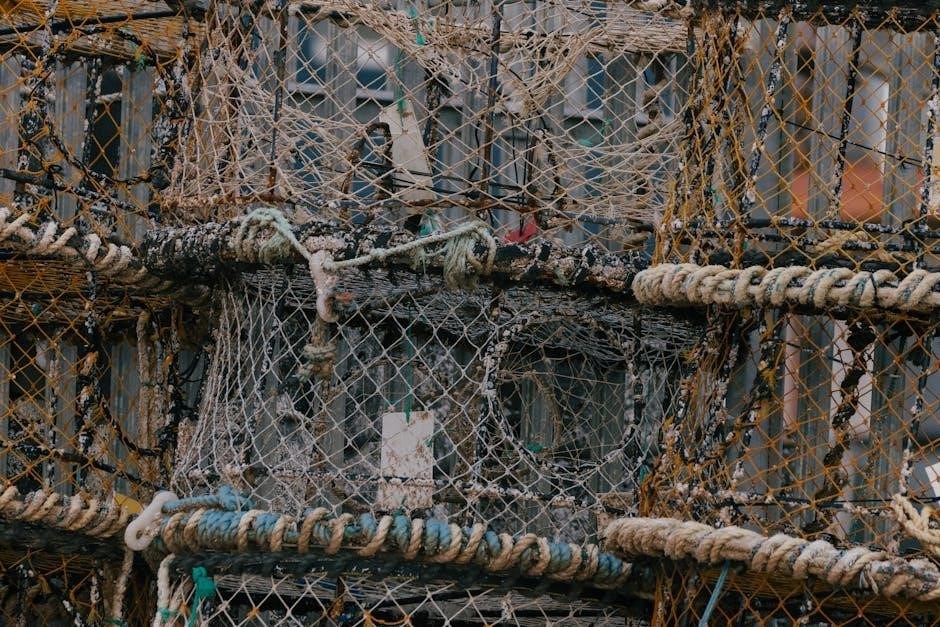
Practical Tips for Mastering Fly Fishing Knots
Regular practice and proper knot seating are key to mastering fly fishing knots․ Use fly fishing knots PDF guides for step-by-step instructions and ensure knots are tightly secured before casting․
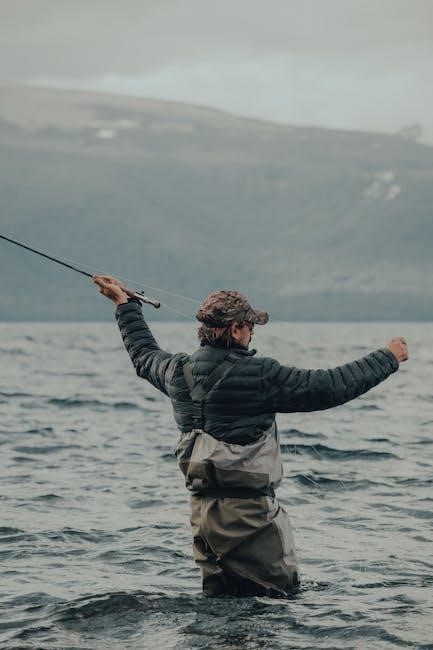
Importance of Proper Knot Seating
Proper knot seating is critical for ensuring the strength and reliability of fly fishing knots․ A poorly seated knot can lead to failure, even if tied correctly․ Always tug gently on the line after tying to secure the knot in place․ Improper seating can cause knots to slip or break under tension, risking lost fish and gear․ To avoid this, inspect each knot carefully and ensure it lies flush against the intended connection point․ Lubricating knots with saliva or water before tightening can also improve seating and reduce the risk of line damage․ Refer to fly fishing knots PDF guides for diagrams and instructions on proper knot seating techniques․ Regular practice and attention to detail will help you master this essential skill․
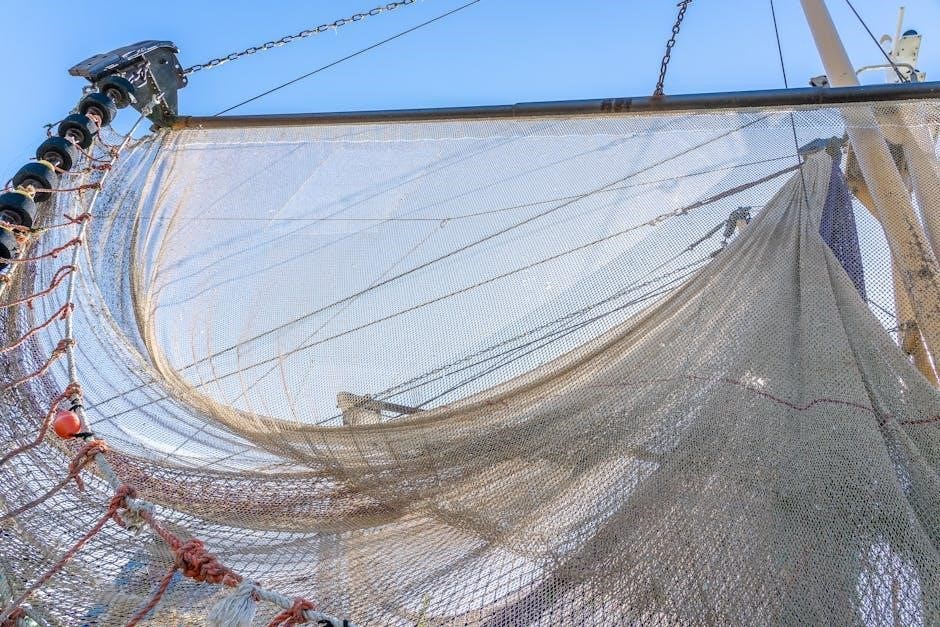
Practice Techniques for Fast Knot Tying
Mastering fast knot tying is crucial for efficient fly fishing․ Regular practice helps develop muscle memory, enabling quick and reliable knot tying․ Begin by practicing individual knots, such as the clinch and improved clinch, until they become second nature․ Use a stopwatch to time yourself and aim to reduce your tying time with each session․ Utilize materials like monofilament or fluorocarbon to simulate real fishing conditions․ Break each knot into steps and focus on perfecting one part at a time․ Consistency is key; set aside a few minutes daily to practice․ For visual learners, fly fishing knots PDF guides provide clear step-by-step instructions and diagrams․ Additionally, tying knots in various environments, such as outdoors, can simulate real-world scenarios, enhancing your readiness on the water․
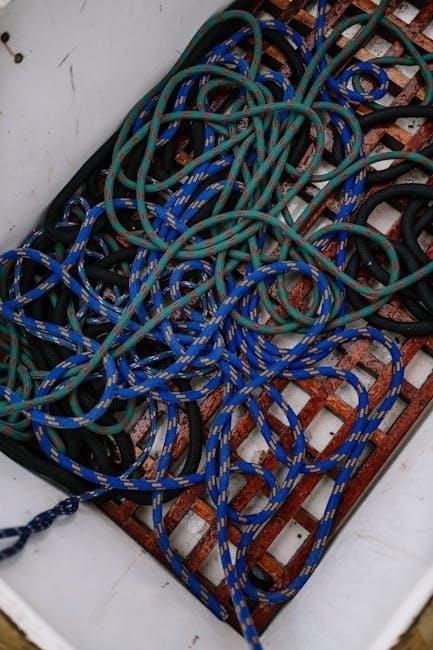
Resources for Learning Fly Fishing Knots
Step-by-step video guides and downloadable fly fishing knots PDF files offer clear, detailed instructions for mastering essential knots․ These resources are ideal for both beginners and experienced anglers․
Step-by-Step Video Guides
Step-by-step video guides are an excellent resource for learning fly fishing knots․ These videos provide clear, detailed demonstrations, allowing anglers to follow along and practice tying knots effectively․ Many guides cover essential knots like the Clinch Knot, Improved Clinch Knot, and Orvis Knot, making them perfect for beginners․ Advanced knots such as the Albright Knot and Surgeon’s Knot are also well-represented․ By watching these tutorials, anglers can improve their technique and ensure knots are tied correctly․ Additionally, these videos often include tips on proper knot seating and common mistakes to avoid․ For those who prefer visual learning, these guides are invaluable, complementing written instructions and PDF downloads for a comprehensive learning experience․ Regular practice with these resources will help anglers master the knots quickly and confidently․
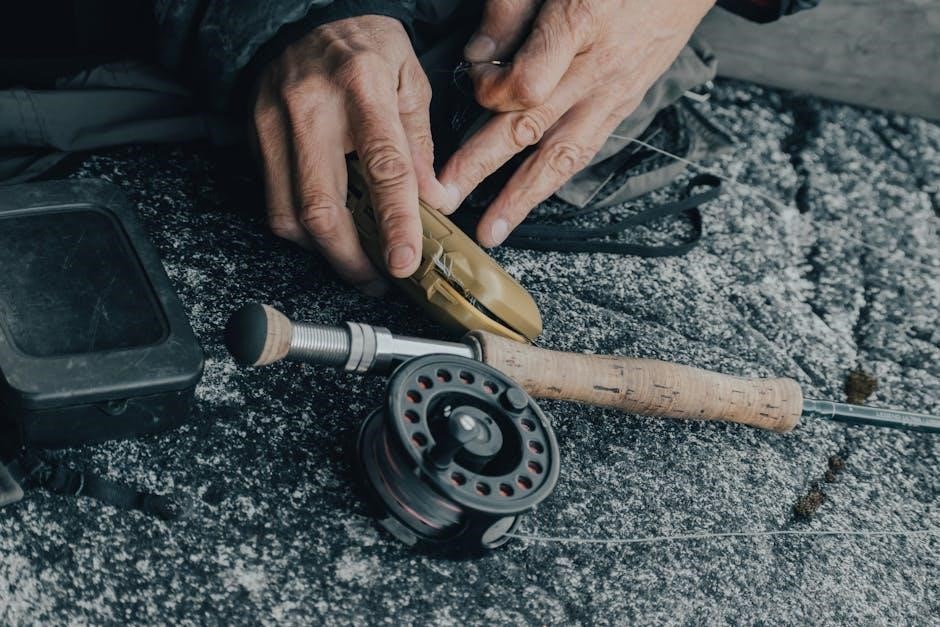
PDF Downloads for Easy Reference
PDF downloads for fly fishing knots provide anglers with a convenient and portable reference guide․ These documents are packed with detailed illustrations, step-by-step instructions, and clear visuals to help master various knots․ Many PDFs include comprehensive guides for essential knots like the Clinch Knot, Orvis Knot, and Blood Knot, as well as advanced options like the Albright Knot․ They often feature high-quality images and diagrams, making it easier to understand and replicate the knot-tying process․ Additionally, these PDFs are searchable and can be saved on mobile devices for quick access while on the water․ Whether you’re a beginner or an experienced angler, these resources are indispensable for practicing and refining your knot-tying skills․ Regular practice with these guides ensures that your knots are reliable and securely tied every time․
